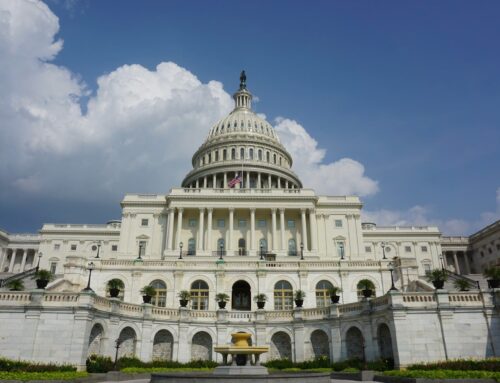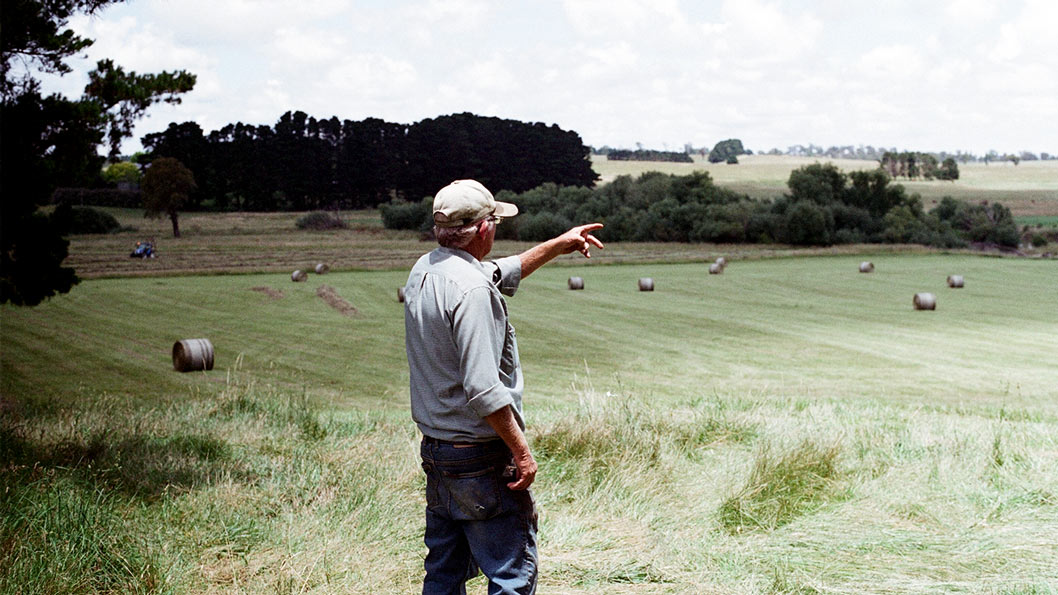Valentine’s Day is approaching, and we need to talk. Continued social distancing, upcoming mid-term elections, and budgetary pressures have combined to make things in Washington a bit frosty. This just isn’t working. So, in an effort to rekindle the romance for making government work, we want to list some policies that we love. We can’t overlook a few heart breakers (farm subsidies), but there are a number of good reforms and even a few PILFs (Program I’d Like to Fund). These conversations can be uncomfortable. That’s why we’re going to break the ice with some tiny Conversation Hearts, you know the little candies with short phrases like “Hug Me” or “Cutie Pie.”
 …fiscal conservatives.
…fiscal conservatives.
First, wow, we’ve spent a lot. Responding to the COVID-19 health emergency and the financial fallout for Americans was important. Investing in infrastructure is key to building a solid future together. But, we miss the days when trillion-dollar spending bills at least made lawmakers think twice about committing. When everything is an emergency nothing is a priority. So it warms our hearts that lawmakers on both sides of the aisle are starting to talk about setting priorities and budgeting for them.
 …Tongass Roadless Rule.
…Tongass Roadless Rule.
Absence may indeed make the heart grow fonder because our hearts are overflowing to have the Roadless Rule back in place for the Tongass National Forest. The 2001 national Roadless Rule prohibits roadbuilding and logging in millions of acres of our national forest system. But it’s had an on-again, off-again affair with the Tongass in southeast Alaska. After an initial courtship, a 2003 rule allowed the Tongass to go its own way until a federal judge struck down the rule in 2011 and the two got back together. Then in 2020, another rulemaking insisted on a clean split – all 9 million Tongass acres covered by the Roadless Rule were suddenly back on the market. Considering timber sales in the Tongass cost taxpayers millions of dollars per year – more than $1.7 billion in total since 1980 – opening up more of the forest to logging was like watching a mooch of a boyfriend move back in. Thankfully, the Forest Service has reversed course and proposed a repeal of the 2020 rule, paving the way for the couple to reunite instead of more timber subsidies in the Tongass.
 …rule to reduce methane waste.
…rule to reduce methane waste.
It’s only natural to pine after the one that got away. In the wonky world of federal lands policy, the 2016 Methane Rule is the one we’re hoping will come back even better. Under rules written back in 1979, oil and gas companies drilling on federal lands annually waste billions of cubic feet of natural gas (which is mostly methane). The 2016 Methane Rule tried to tackle the problem by setting standards for how much could be lost and charging operators when the standards weren’t met. The courts took the air out of the Trump Administration’s ham-fisted attempt to repeal the rule, but also blew away the underlying 2016 rule, though an appeal is ongoing. In the meantime, the Bureau of Land Management has indicated it plans to propose a new version of the rule, maybe as soon as March. Given the cost of gas waste to taxpayers and the potent warming potential of methane in the atmosphere, we’re eager a sensible methane rule will be ours again.
 …royalty rate for new oil and gas lease sales.
…royalty rate for new oil and gas lease sales.
For years we’ve had our heart set on a higher federal onshore oil and gas royalty. Taxpayers have been wedded to the current rate of 12.5% since it was set in 1920. In comparison, Texas, Oklahoma, North Dakota, New Mexico, Colorado, and California all charge 18.75% or more for at least some of their leases, as do federal leases in offshore waters. Had 18.75% been charged for all oil and gas produced on federal lands over the last decade, taxpayers could have gotten up to $12.9 billion more in revenue. It seems like our love might be reciprocated at last. Just last week, the Department of the Interior dropped a hint that it is considering increasing the royalty rate for new onshore leases as well as other leasing reforms. Apart from agency actions, both the House and Senate versions of the stalled Build Back Better Act include important leasing reforms like higher onshore royalty that will ensure taxpayers receive a fair return for the oil and gas resources we all own. Congress should continue to push to make these reforms permanent so that higher royalty rate is here to stay.
 …hardrock mining royalty.
…hardrock mining royalty.
You know what they say, it is better to have loved and lost than never to have loved at all. When the House Rules Committee print of the Build Back Better bill was released on October 28, we fell hard for the much-needed reforms to hardrock mining. The proposed legislation included provisions to finally start collecting revenue for taxpayers from hardrock mineral production on federal land: a 4% royalty on gross income for new mining operations and a 2% royalty for existing operations, with nearly $1 billion of these royalties going toward abandoned mine reclamation over the next decade. But only one week later, our hearts were broken when the House Rules Committee released an updated version of the bill without the hardrock provisions. We lost our Valentine and taxpayers lost billions of dollars in potential revenue. (Because the DOI does not keep a diary of the quantity or value of hardrock minerals extracted from federal lands, it is impossible to estimate the total potential revenue from royalties). However, we are optimistic that by next Valentine’s Day we might have a reason to celebrate. As TCS Vice President Autumn Hanna testified to the Senate Energy and Natural Resource Committee, “no one thinks simply giving away valuable minerals for nothing makes fiscal sense.”
Fun fact: conversation hearts were first made by Necco (of wafer fame) in the 1860s making them only slightly older than 150-year old mining law.
 – COLUMBIA Class Submarine
– COLUMBIA Class Submarine
For years we’ve been dreaming of some fiscal sanity being applied to both public shipyards and the shipbuilding budgets. The U.S. Navy, on the other hand, has focused its heart’s desire on the next generation ballistic missile submarine, the COLUMBIA class. And while we do love that it’s the one leg of the nuclear triad that foils our adversaries the most, we don’t love it quite as much as House Appropriators. The latest Continuing Resolution allows the Navy to accelerate funding for COLUMBIA by as much as $1.6 billion. Must be great to be the ultimate Congressional dreamboat.
 – Nuclear Nonproliferation
– Nuclear Nonproliferation
One of the greatest promoters of peace in the federal budget is at the National Nuclear Security Administration (NNSA). The Defense Nuclear Nonproliferation Programs, funded at just over $2 billion per year, are intended to promote U.S. security by halting the global spread of nuclear weapons or weapons-related materials, technology, and expertise. These programs are a giant step toward a more peaceful world. And who wouldn’t love that? Unfortunately, the Biden Administration’s first budget request included just a $4 million, or .2%, increase to this key program. We’re hoping to see more love for these programs in the FY23 request.
 – Let us Read the Bill
– Let us Read the Bill
Congress did make some progress in transparency. President Biden signed The Budget Justification Transparency Act in September of last year, giving taxpayers the opportunity to see all the loving details behind the numbers of the budget request. Think of it as a Valentine that will arrive every February (err…maybe March this year!) describing why each line in the budget is the object of desire of the requesting agency. Congress should follow this by living up to its vow of giving taxpayers (and each other) more time to actually read the bills. We won’t kid you and say every bill’s a love letter, but, still they deserve some attention. Republicans and Democrats have repeatedly promised to do so, yet omnibus spending bills come up with barely any time to read them. House Agriculture even adopted its reconciliation bill with text for the $27 billion Conservation title sight unseen. Lawmakers should be able to read and digest each bill before they make it their betrothed.
 – Federal Sugar Program
– Federal Sugar Program
No Valentine’s Day is complete without some sweet talk. For decades no group has had a deal as sweet as US sugar growers. The federal government artificially increases the price of sugar by limiting how much sugar can be sold, capping imports at low amounts, and even buying “excess” sugar when prices are deemed too low. And while the bond between lawmakers and the “Candy-Coated Cartel” is re-consummated yearly by millions in campaign donations, a bipartisan effort to free taxpayers from this toxic relationship is afoot.
So as not to end on a sad note: we will point out that conversation hearts are made by competing companies including Sweethearts, Brach’s, and SweeTarts, but no matter the brand they’re sure to bring a smile to the face of taxpayers. And this year some of the companies trotted out new catch phrases like “Way 2 Go”, “Crush It”, and “High Five.” So we’ll put in the work to ensure we have a few other positive developments for taxpayers to point to next year.


 …Tongass Roadless Rule.
…Tongass Roadless Rule. …rule to reduce methane waste.
…rule to reduce methane waste.
 …hardrock mining royalty.
…hardrock mining royalty. – COLUMBIA Class Submarine
– COLUMBIA Class Submarine – Nuclear Nonproliferation
– Nuclear Nonproliferation











Get Social